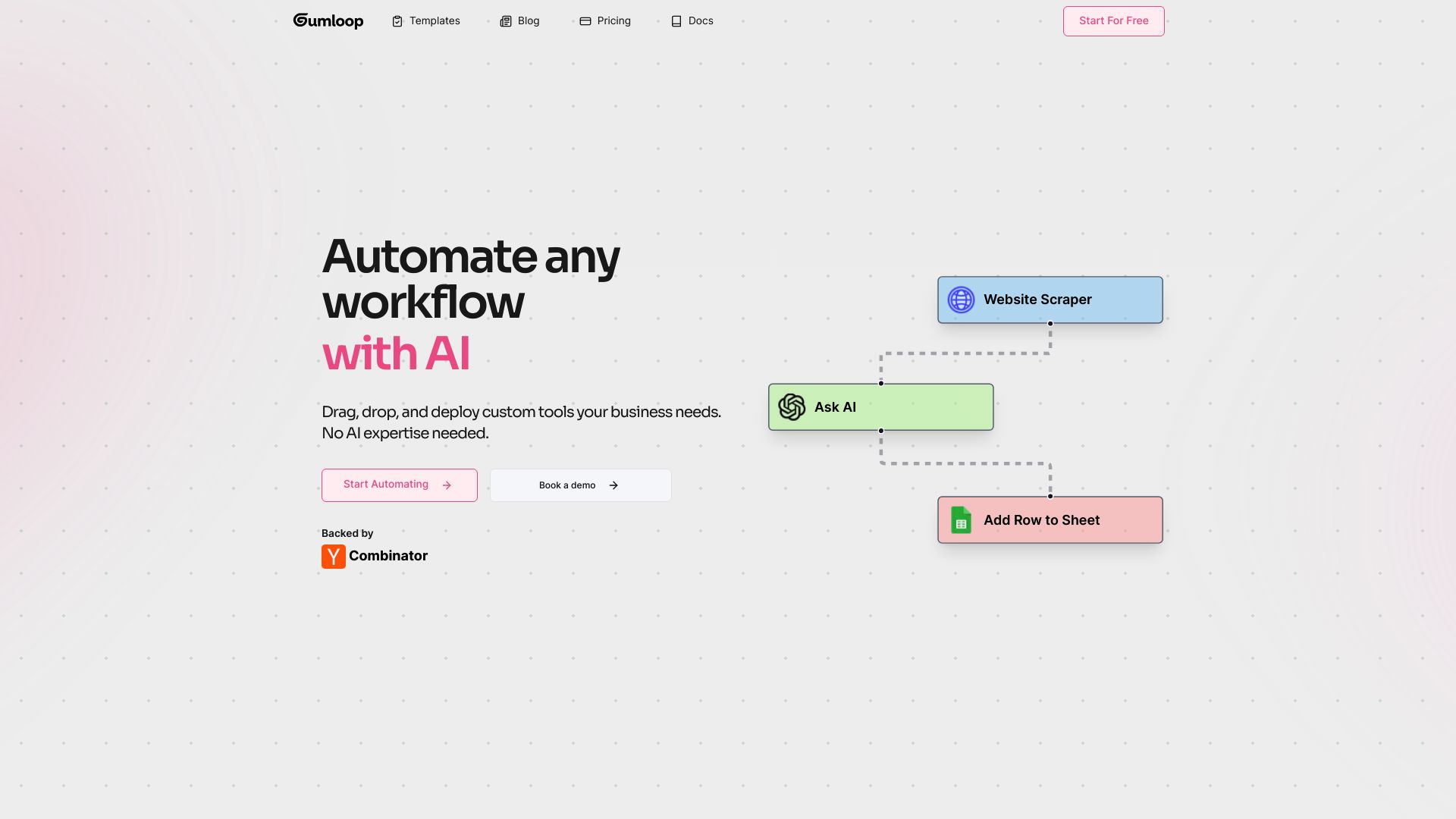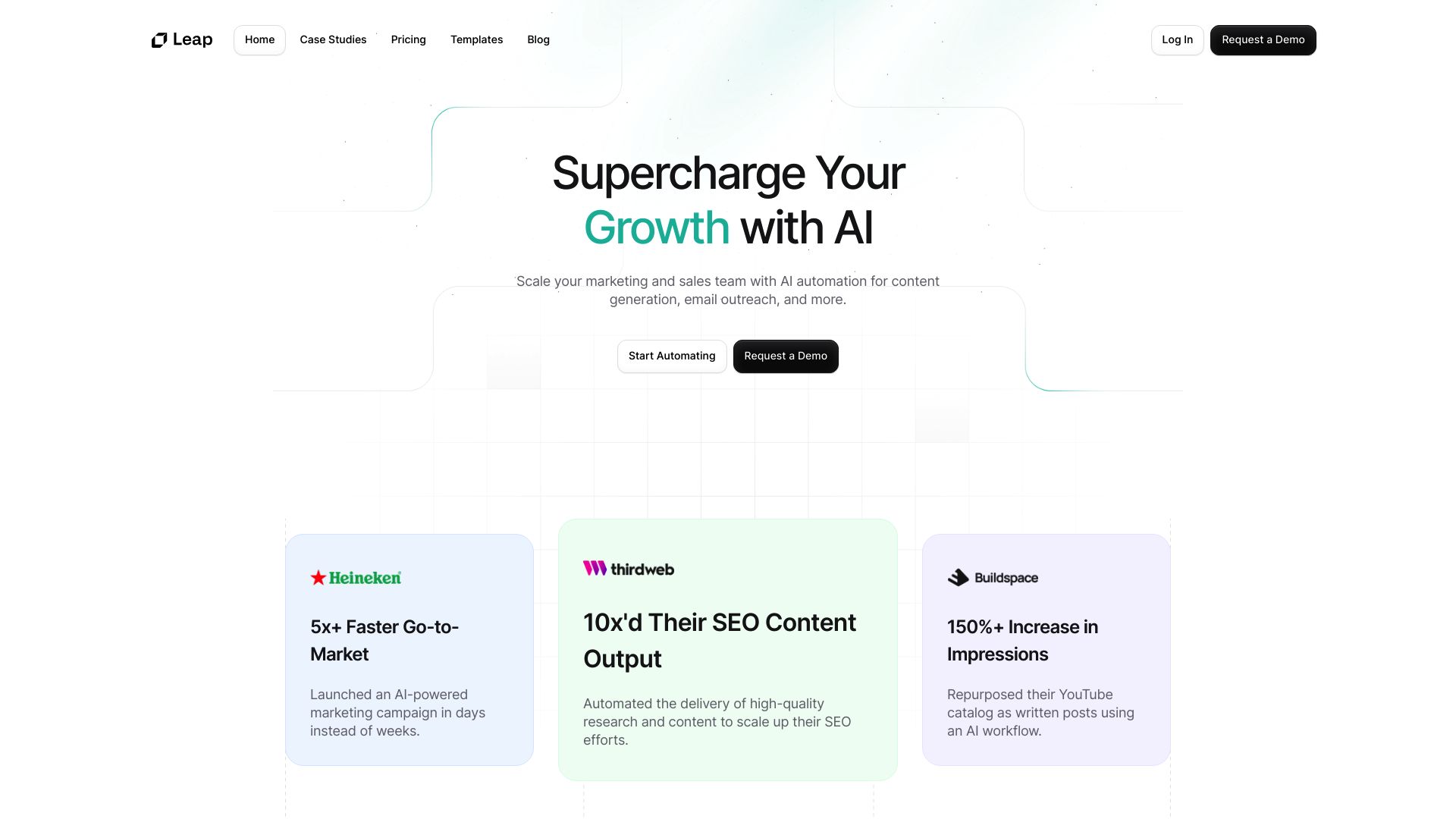AgentHub vs. Leap AI: Comparing AI Automation Powerhouses
AI automation platforms revolutionize how businesses harness advanced technologies, streamlining operations and unlocking new capabilities. This review compares AgentHub vs. Leap AI, two leading no-code solutions empowering users to create sophisticated AI workflows. We examine their unique approaches to agent development, integration capabilities, and security features.
By exploring their strengths and limitations, we aim to help you choose the platform that best fits your AI automation needs. Our analysis also introduces SmythOS, showcasing how it addresses key challenges and offers unparalleled versatility in the AI automation landscape.
AgentHub Overview
AgentHub revolutionizes AI automation with its no-code platform, empowering businesses to create sophisticated AI-powered workflows without programming expertise. The platform’s visual builder streamlines the development of customized AI agents, making advanced automation accessible to a wide range of users.
At its core, AgentHub offers a comprehensive suite of tools for lead generation, client management, and marketing automation. Real estate professionals can leverage these features to streamline their operations, from generating leads through various channels to managing complex transactions and client communications. The platform’s integration capabilities ensure seamless connection with popular real estate software, enhancing overall efficiency.


AgentHub’s strength lies in its pre-optimized agents, designed to tackle specific tasks without requiring users to select prompts or tools manually. This feature, combined with customizable nodes, allows businesses to tailor workflows to their unique requirements. The platform supports multi-agent collaboration, enabling complex problem-solving and team-based approaches to AI automation.
AgentHub revolutionizes AI automation with its no-code platform, empowering businesses to create sophisticated AI-powered workflows without programming expertise.
While AgentHub excels in many areas, it lacks some advanced features like constrained alignment and IP control. However, it compensates with robust security measures, including data encryption and OAuth support. The platform’s scalability and deployment options as APIs, webhooks, and site chats provide flexibility for various use cases, making it a versatile choice for businesses looking to harness AI for operational efficiency and innovation.
Leap AI Overview
Leap AI empowers users to create sophisticated AI workflows without coding expertise. The platform’s visual builder and extensive template library enable rapid development of AI-powered applications for tasks ranging from content generation to customer support automation.


Leap AI’s core strength lies in its versatility. The platform supports multiple AI models, including OpenAI GPT, Mistral 7b, and Stable Diffusion XL, allowing users to tackle diverse challenges from text generation to image creation. This flexibility makes Leap AI suitable for a wide range of industries and use cases.
Leap AI empowers users to create sophisticated AI workflows without coding expertise.
The platform’s integration capabilities stand out as a key feature. Leap AI seamlessly connects with popular tools like Slack, Hubspot, and Zapier, enabling users to incorporate AI-powered workflows into their existing tech stacks. This integration potential enhances productivity and streamlines operations across various business processes.
While Leap AI offers powerful features, users should consider potential limitations. The platform’s focus on no-code solutions may restrict advanced customization options for developers seeking granular control. Additionally, as with many AI platforms, the quality of outputs depends heavily on the quality of input data and careful prompt engineering.
Feature Comparison
AgentHub and Leap AI both offer robust platforms for building AI agents, but differ in key areas. AgentHub excels with its pre-optimized agents designed for specific tasks, eliminating the need for manual prompt or tool selection. This allows users to quickly deploy effective AI solutions without extensive configuration. In contrast, Leap AI provides greater flexibility with support for multiple AI models like OpenAI GPT and Stable Diffusion XL, enabling a wider range of applications from text generation to image creation.
Core component differences emerge in their approaches to agent development. AgentHub’s visual builder and customizable nodes cater to businesses seeking tailored workflows, while Leap AI’s extensive template library accelerates development for common use cases. AgentHub’s multi-agent collaboration feature stands out, facilitating complex problem-solving through team-based AI approaches. Leap AI counters with superior integration capabilities, connecting seamlessly with tools like Slack and Hubspot to enhance existing tech stacks.
Security-wise, both platforms offer data encryption and OAuth support. However, neither provides advanced features like constrained alignment or IP control, which may be crucial for enterprises with stringent security requirements. We address these concerns comprehensively in SmythOS, offering robust security measures including constrained alignment and IP control to ensure your AI deployments meet the highest standards of data protection and operational integrity.
Feature Comparison Table
| AgentHub | Leap AI | SmythOS | |
|---|---|---|---|
| CORE FEATURES | |||
| Hosted Agents (Dev, Production) | ✅ | ❌ | ✅ |
| Autonomous Agents | ✅ | ❌ | ✅ |
| Explainability & Transparency | ✅ | ❌ | ✅ |
| Debug Tools | ✅ | ❌ | ✅ |
| Multimodal | ❌ | ✅ | ✅ |
| Multi-Agent Collaboration | ✅ | ❌ | ✅ |
| SECURITY | |||
| Constrained Alignment | ❌ | ❌ | ✅ |
| Data Encryption | ❌ | ✅ | ✅ |
| OAuth | ❌ | ✅ | ✅ |
| IP Control | ❌ | ✅ | ✅ |
| COMPONENTS | |||
| Huggingface AIs | ❌ | ✅ | ✅ |
| Zapier APIs | ❌ | ✅ | ✅ |
| Classifiers | ❌ | ✅ | ✅ |
| Data Lakes | ❌ | ❌ | ✅ |
| DEPLOYMENT OPTIONS (EMBODIMENTS) | |||
| Staging Domains | ❌ | ✅ | ✅ |
| Production Domains | ❌ | ✅ | ✅ |
| API Authentication (OAuth + Key) | ❌ | ✅ | ✅ |
| Deploy as Site Chat | ❌ | ✅ | ✅ |
| Deploy as GPT | ❌ | ✅ | ✅ |
| DATA LAKE SUPPORT | |||
| Hosted Vector Database | ❌ | ❌ | ✅ |
| Sitemap Crawler | ❌ | ✅ | ✅ |
| YouTube Transcript Crawler | ❌ | ✅ | ✅ |
| PDF Support | ❌ | ✅ | ✅ |
| Word File Support | ❌ | ✅ | ✅ |
| TXT File Support | ❌ | ✅ | ✅ |
Best Alternative to AgentHub and Leap AI
SmythOS emerges as the superior alternative to AgentHub and Leap AI for agentic AI automation. Our platform combines powerful features with unmatched ease of use, enabling businesses to create and deploy sophisticated AI agents rapidly. Unlike AgentHub’s limited pre-optimized agents or Leap AI’s rigid template system, SmythOS offers unlimited flexibility to tackle any use case.
SmythOS emerges as the superior alternative to AgentHub and Leap AI for agentic AI automation… enabling businesses to create and deploy sophisticated AI agents rapidly.
We provide a comprehensive suite of tools for building, testing, and managing AI agents at scale. Our visual drag-and-drop interface makes agent creation intuitive, while our extensive API integrations and support for custom logic allow for complex workflows. SmythOS excels in multi-agent collaboration, enabling teams of AI to work together on challenging problems.
Security is paramount in SmythOS. We implement robust measures like constrained alignment and granular access controls that AgentHub and Leap AI lack. This ensures your AI agents operate safely and ethically. Our platform also offers unparalleled scalability, seamlessly handling enterprise-level deployments.
With SmythOS, you gain a true end-to-end solution for AI automation. From ideation to production, we empower you to harness AI’s full potential across your organization. Our platform’s versatility, power, and ease of use make it the clear choice for businesses serious about leveraging AI to drive innovation and efficiency.
Conclusion
AgentHub and Leap AI offer powerful AI automation solutions, each with unique strengths. AgentHub’s pre-optimized agents and visual builder cater to businesses seeking quick deployment of AI workflows without extensive configuration. Leap AI’s support for multiple AI models and robust integration capabilities provide flexibility for diverse applications.
While both platforms excel in their respective areas, SmythOS emerges as the superior choice for businesses seeking comprehensive AI automation. We offer unparalleled versatility with our “Create Once, Deploy Anywhere” approach, allowing seamless integration across various platforms and services. Our drag-and-drop interface, combined with over 300,000 integrations, empowers users to create sophisticated AI workflows effortlessly.
SmythOS stands out with advanced features like constrained alignment and IP control, addressing critical security concerns for enterprise-level deployments. Our platform’s scalability, multi-agent collaboration capabilities, and support for diverse AI models from providers like OpenAI and Hugging Face position us as the ideal solution for businesses looking to harness the full potential of AI automation.
If you’re ready to revolutionize your AI workflow and experience unmatched flexibility and power, explore SmythOS today. Create your free account and discover how our AI-powered solutions can transform your business operations. With SmythOS, you’re not just adopting a tool; you’re embracing the future of AI automation.
Last updated:
Disclaimer: The information presented in this article is for general informational purposes only and is provided as is. While we strive to keep the content up-to-date and accurate, we make no representations or warranties of any kind, express or implied, about the completeness, accuracy, reliability, suitability, or availability of the information contained in this article.
Any reliance you place on such information is strictly at your own risk. We reserve the right to make additions, deletions, or modifications to the contents of this article at any time without prior notice.
In no event will we be liable for any loss or damage including without limitation, indirect or consequential loss or damage, or any loss or damage whatsoever arising from loss of data, profits, or any other loss not specified herein arising out of, or in connection with, the use of this article.
Despite our best efforts, this article may contain oversights, errors, or omissions. If you notice any inaccuracies or have concerns about the content, please report them through our content feedback form. Your input helps us maintain the quality and reliability of our information.
